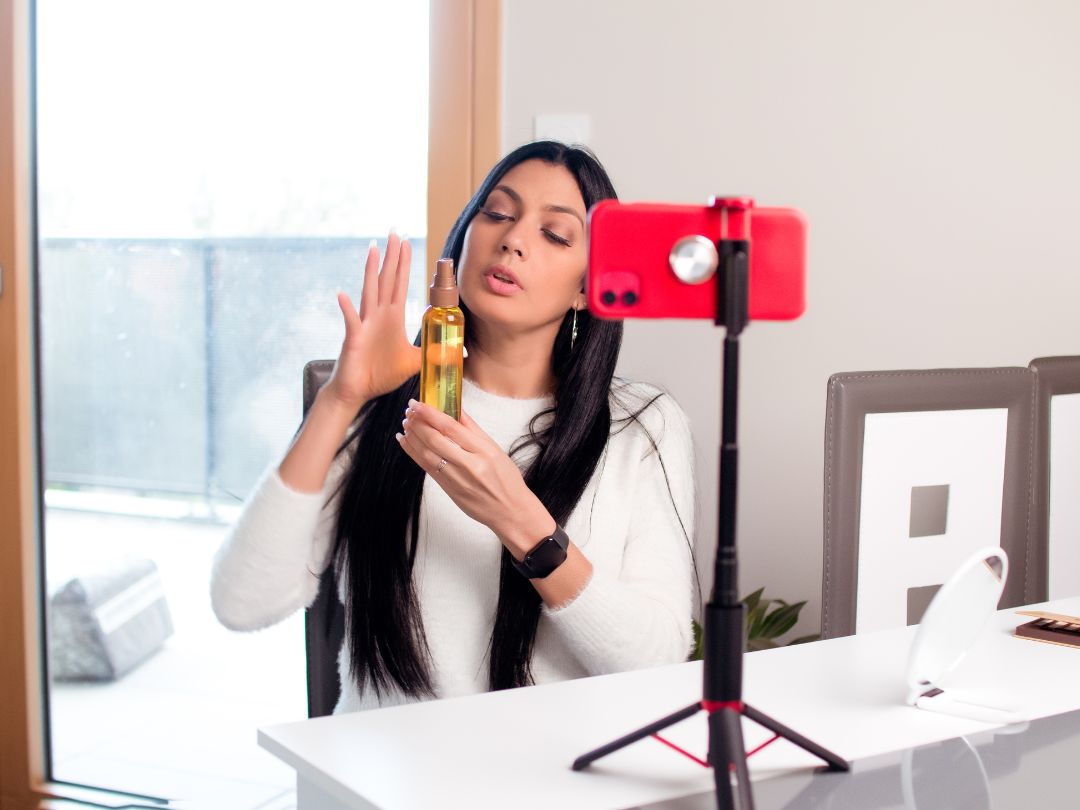In today’s digital world, consumers crave authenticity and connection, often tuning out traditional advertising. This shift has made User Generated Content (UGC) – content created by real people like customers, fans, or employees, not brands – absolutely essential. Think of genuine customer reviews, unboxing videos, or photos shared on social media; this is UGC building trust and influencing decisions organically. As we head further into 2025, understanding and leveraging UGC is no longer just beneficial – it’s fundamental for brands aiming to build lasting relationships and drive meaningful growth.
What Exactly is User-Generated Content (UGC)?
Let’s unpack the concept of UGC further. It’s more than just random online chatter; it’s a specific category of content defined by its origin and nature. At its heart, UGC embodies authenticity. Because it originates from real users without direct brand scripting (though brands can certainly encourage it), it carries an inherent trustworthiness that professionally produced content often lacks.
Key characteristics define UGC:
- Origin: Created by non-paid contributors – primarily customers, but also fans, employees, and sometimes specific UGC creators.
- Authenticity: Reflects genuine user experiences, opinions, and perspectives, often unpolished and relatable.
- Diversity: Spans a wide array of formats, adapting to different platforms and user preferences.
- Brand Value: Provides invaluable social proof, generates fresh content, offers audience insights, and directly influences purchasing behaviour.
Who Creates User Generated Content?
The creators of UGC are diverse, each bringing a unique perspective:
- Customers: The largest group, sharing direct experiences through reviews, social posts, photos of products in use, etc. Their feedback is crucial for potential buyers.
- Brand Loyalists/Advocates: Enthusiastic fans who proactively create positive content, often driven by genuine affection for the brand or its community.
- Employees: Offering an inside look, employee-generated content can highlight company culture, values, and expertise, acting as powerful employer branding and trust signals.
- Paid UGC Creators: A growing segment, distinct from traditional influencers. These creators specialise in producing authentic-style content for brands, often following specific briefs but maintaining a user-like aesthetic. This blurs the lines slightly but still taps into the demand for relatable content.
Common Formats of User Generated Content:
The digital world provides countless avenues for UGC. Recognising these formats helps brands identify and leverage them effectively:
- Reviews and Ratings: Found on e-commerce sites (Amazon, Shopify stores), review platforms (Google Maps, Yelp, Trustpilot), and industry-specific sites. They are often the first stop for researching buyers.
- Photos: Customer photos showing products in real-life settings (e.g., fashion items being worn, home goods in situ) are incredibly powerful on visual platforms like Instagram and Pinterest, and increasingly vital on product pages.
- Videos: Includes unboxing videos, tutorials, “how-to” guides, video testimonials, and short-form clips on platforms like TikTok and Instagram Reels. Video UGC is highly engaging and offers dynamic demonstrations.
- Social Media Content: Encompasses posts, stories, comments, mentions, and shares across platforms like Instagram, Facebook, X (Twitter), TikTok, LinkedIn, etc. Hashtag campaigns thrive here.
- Testimonials: More structured than reviews, often longer-form written accounts or dedicated video interviews detailing a positive experience. Highly effective on websites and landing pages.
- Blog Posts & Forum Discussions: In-depth reviews, comparisons, or discussions within online communities (like Reddit or specialised forums) provide detailed user perspectives.
- Q&A Sections: User-submitted questions and answers on product pages or platforms like Quora build a knowledge base and address specific concerns.
Why UGC is No Longer Optional: Key Benefits for Your Brand (2025 Data)

The evidence supporting UGC’s impact is overwhelming. Brands neglecting it risk falling behind competitors who understand its power to connect and convert. Let’s explore the data-backed benefits:
Builds Unmatched Trust & Authenticity
In an era of declining trust in traditional media and advertising, authenticity reigns supreme. Nielsen research has consistently shown consumers trust peer recommendations above all other forms (around 88% trust peer recommendations, according to recent figures via inBeat Agency). Furthermore, studies indicate a vast majority of marketers (around 93%, per Billo via Backlinko) find UGC outperforms their own branded content, precisely because it feels more genuine. Consumers see themselves reflected in UGC, making the message resonate deeply.
Drives Purchasing Decisions
Trust translates directly into sales. A significant percentage of consumers (around 82%, according to EnTribe via Backlinko) state they are more likely to purchase from a brand that utilizes UGC in its marketing. For younger demographics like Gen Z and Millennials, this influence is even more pronounced. UGC acts as powerful social proof, alleviating purchase anxiety and validating choices.
Increases Conversions & Engagement
Featuring UGC at critical touchpoints can dramatically boost results. Including customer photos or reviews on e-commerce product pages has been shown to increase conversion rates significantly (sometimes cited as high as 161% lift, via inBeat). UGC also typically generates higher engagement rates (likes, shares, comments) on social media compared to standard brand posts because it sparks conversation and community interaction.
Cost-Effective Content Generation
Professional content creation demands significant resources – time, money, and creative effort. UGC provides a continuous stream of relevant, diverse content often at a fraction of the cost, freeing up marketing budgets for other initiatives. It solves the “always-on” content needs of modern digital marketing.
Provides Valuable Social Proof
Seeing others use and enjoy a product or service builds confidence. Positive reviews, high ratings, and images of happy customers collectively act as endorsements, reinforcing a brand’s credibility and desirability.
Boosts SEO
Search engines favour fresh, relevant, and engaging content. UGC, especially text-based reviews and Q&A, naturally incorporates long-tail keywords and user language. The engagement signals generated by UGC (like time spent viewing customer photos) can also positively influence search rankings. Some analyses suggest UGC can account for around 25% of search results for top brands (via inBeat).
Offers Audience Insights
UGC is a direct line to customer thoughts, feelings, and behaviours. Analysing reviews, comments, and user-submitted photos can reveal product feedback, identify pain points, uncover new use cases, and inform future marketing strategies and product development.
How to Encourage and Collect High-Quality UGC
While some UGC happens spontaneously, brands can actively foster its creation:
- Set Clear Goals
- Create Dedicated Campaigns & Contests
- Use Branded Hashtags
- Ask Directly & Strategically
- Provide Clear Guidelines (But Don’t Over-Script
- Engage with Existing UGC
- Leverage Employee Advocacy
- Make Submission Easy
- Partner with UGC Creators/Micro-Influencers
Putting UGC to Work: Integration Across Your Marketing Channels
Collecting UGC is only the first step; strategically integrating it across your marketing ecosystem unlocks its full potential:
- Website & Product Pages: This is prime real estate. Embed visual galleries of customer photos, showcase star ratings prominently, display detailed reviews (both positive and constructive, with brand responses), and feature video testimonials. This directly impacts conversion rates by building trust at the point of decision.
- Social Media: Go beyond simple reposting. Create themed UGC highlight reels, run “customer spotlight” features, use UGC in Stories and Reels, and incorporate it into visually appealing feed posts. Respond actively to tagged posts.
- Advertising Campaigns: UGC often outperforms polished brand creative in ad campaigns. Test using customer photos, quotes from reviews, or short video clips in social media ads, display ads, and even video pre-roll. Data suggests UGC ads can achieve significantly higher click-through rates (up to 4x higher) and lower cost-per-click (50% reduction) (via inBeat).
- Email Marketing: Enhance newsletters and promotional emails with customer testimonials, inspiring user photos, or snippets of top reviews. This adds social proof and can significantly boost click-through rates (reported increases of 78%, per Billo via Backlinko).
- Offline Materials: While digital-first, consider impactful UGC quotes or photos for print ads, brochures, or in-store displays where relevant.
- Internal Communications: Share positive customer feedback and impactful UGC internally to boost employee morale, reinforce company mission, and connect staff with customer impact.
Measuring the ROI of Your UGC Efforts
Quantifying the impact of UGC is essential for justifying investment and refining strategy. Focus on metrics aligned with your initial goals:
- Engagement Metrics: Track likes, comments, shares, saves, and views on UGC posts (both user-originated and brand-amplified). Compare engagement rates of UGC versus branded content.
- Conversion Metrics: Use tracking links (UTMs), specific promo codes shared via UGC campaigns, or platform analytics to attribute website traffic, leads, and sales to UGC initiatives. Monitor conversion rates on pages featuring UGC galleries or reviews.
- Brand Health Metrics: Use social listening tools to monitor brand mentions, track sentiment (positive, negative, neutral) associated with UGC, and measure share of voice.
- Content Metrics: Quantify the volume of usable UGC collected. Estimate the cost savings compared to producing equivalent content professionally.
- Campaign-Specific KPIs: Measure metrics directly related to campaigns, such as hashtag usage volume, contest entries, or redemptions of UGC-linked offers.
Utilise a combination of platform analytics (social media insights, Google Analytics), social listening software, and potentially dedicated UGC platforms to track these KPIs effectively.
The Future of UGC: Trends to Watch (2025 and Beyond)

The UGC landscape continues to evolve rapidly:
- Dominance of Video: Especially short-form video (TikTok, Reels, Shorts) will remain a primary format for engaging UGC. Brands need strategies to encourage and leverage video content effectively.
- AI Integration: AI tools will increasingly assist in identifying relevant UGC, analysing sentiment, potentially generating captions, and even identifying trends within user content. Ethical considerations regarding AI manipulation of authentic content will be paramount.
- Hyper-Personalisation & Niche Communities: Brands will leverage UGC to connect with highly specific audience segments and build stronger communities around shared interests related to their products.
- Creator Economy Maturation: The lines between traditional influencers and UGC creators will continue to blur. Brands will seek long-term partnerships with creators who demonstrate genuine brand affinity and authentic connection with their audience.
- Demand for Raw Authenticity: As consumers become more aware of sponsored content, the demand for truly raw, unpolished, and visibly authentic UGC will intensify. Overly curated UGC may lose its impact. Data indicating Gen Z’s growing trust in future UGC credibility supports this trend (via inBeat).
Conclusion: Harnessing the Power of Your Audience with influencers2c
User-Generated Content has fundamentally shifted the marketing paradigm. It champions authenticity, builds unbreakable trust, and empowers brands to connect with their audiences on a profoundly human level. From driving purchasing decisions and boosting engagement to providing cost-effective content and invaluable insights, the benefits of a well-executed UGC strategy in 2025 are undeniable. By understanding the different types of UGC, actively encouraging its creation, strategically integrating it across channels, measuring its impact, and navigating potential challenges with care, businesses can unlock exponential growth fuelled by their most valuable asset: their customers.
Implementing a successful UGC strategy requires expertise in identifying the right creators, managing campaigns effectively, ensuring legal compliance, and integrating content seamlessly. This is where specialised knowledge becomes crucial. At influencers2c, we understand the nuances of the creator economy and the power of authentic User-Generated Content. We partner with brands to develop and execute tailored UGC strategies that resonate with target audiences, build genuine brand advocacy, and deliver measurable results. By harnessing the collective voice of your customers and collaborating with the right creators, influencers2c helps you transform authentic user experiences into your most powerful marketing advantage.










